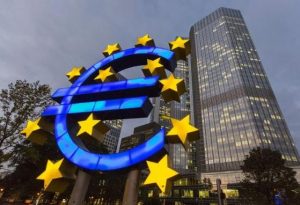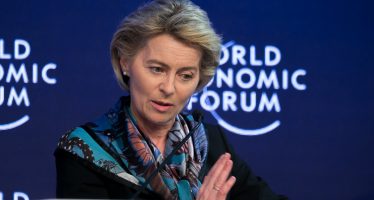The Sudden Fall and Coming Resuscitation of Reaganomics
 Trickle-down economics was counted amongst the first fatalities of the corona pandemic. The belief that government interference with the functioning of the free market is evil by design hastily gave way in early March as the ‘Wuhan virus’ revealed its terrifying scope and doomsday-like impact on businesses and households alike.
Trickle-down economics was counted amongst the first fatalities of the corona pandemic. The belief that government interference with the functioning of the free market is evil by design hastily gave way in early March as the ‘Wuhan virus’ revealed its terrifying scope and doomsday-like impact on businesses and households alike.
Making a landfall in Austria and Italy, but quickly engulfing all of Europe before bursting stateside, the novel coronavirus almost immediately prompted loud calls for decisive government action to shield society from the devastation. Suddenly, nearly all were clamouring for the agencies of state to come a-knocking with offerings of help.
Central banks were the first to act. The European Central Bank (ECB) expanded both the size and duration of its emergency purchase programme, in place since 2014, to €1,850 billion. However, ECB President Christine Lagarde also warned that monetary policy alone could not prevent an economic meltdown and appealed for fiscal stimulus on a scale not usually seen outside wartime.
In the US, the Federal Reserve stepped in – and up – with $2.3 trillion in new lending facilities. The bank also slashed its federal funds rate by 1.5 percentage points to a historic low of 0.25%. Since March, the Fed has been buying government-backed debt to the tune of $120bn per month. Fed President Jerome Powell staged an abrupt and surprising about turn by taking the system of US central banks back to its original mandate, declaring that henceforward monetary policy levers would be worked to prioritise full employment instead of price stability.
Powell enjoyed his own ‘whatever-it-takes moment’ when he stated that the Fed would deliver ‘powerful support to the economy until the recovery is complete’. The bluntness of the message buoyed equity markets even as pink slips poured down by the tens of millions in a tickertape parade of despair and misery.
Fiscal Largesse
Soon after, the US government followed the example set in Europe and began pumping vast volumes of ready cash into the economy. Though widely criticised for its initial reluctance to act, the Trump Administration – prodded by Congress – released a fiscal impulse equal to about 14% of GDP (2019) according to data compiled by the Bruegel Institute, a Brussels-based economic thinktank. This number is roughly at par with the fiscal measures taken by most EU member states with the sole exception of Italy where the government committed almost half of the country’s GDP to supporting the sagging economy.
The template of the 2008 financial crisis proved quite useful even as fiscal and monetary policymakers quickly realised that their response had to be scaled up by an order of magnitude. In its ‘The $10 Trillion Rescue’ study, global management consultant McKinsey showed that most major economies amplified their fiscal response to the pandemic by a factor of ten compared to the previous crisis.
Early on, Germany suspended its (in)famous ‘Schwarze Null’ policy – a source of pride to a frugal nation – for the duration to once again allow deficit spending. The government of Chancellor Angela Merkel acted swiftly to protect German industry and shield households from the pandemic’s fallout. It provided relief in excess of 33% of the country’s GDP. Japan (21.0%), France (14.6%), and the United Kingdom (14.5%) soon followed suit, driving pre-existing deficits into the fiscal stratosphere. Others on a less sturdy financial footing at the pandemic’s onset, tried to keep up as best they could with India committing 10% of GDP to emergency stimulus measures, South Africa 8.6%, and Brazil 5.5%.
In the US, the swansong of a few supply-side economics (aka voodoo economics) diehards was drowned out by an almost unison choir of new converts to economic heterodoxy. A stimulus package unprecedented in size and scope was duly approved by both houses of Congress. Thus, Americans received their first sampling of the welfare state. The government, so it seemed, was able to help without also terrifying its beneficiaries, as President Ronald Reagan had memorably quipped in 1986.
A last-ditch attempt by Mr Trump to forego the aid package and fight the pandemic with additional tax cuts instead went nowhere and the president signed the CARES Act into law on March 27. The act instantly freed up $560bn for increased unemployment benefits and a one-off $1,200 cash payment to individual Americans. Additionally, the Paycheck Protection Program provided $350bn to small businesses struggling to meet their payroll. This fund was later expanded to $669bn.
Trickle-down Economics
Despite the loss of 22 million jobs, an estimated 18 million Americans emerged from poverty in April as stimulus cheques were cashed and the $600 unemployment supplement kicked in. However, after the weekly bonus expired on July 31, some 14 million people dipped back under the poverty line over the following two months.
Remarkably, even a few former fans of trickle-down economics bravely agreed that the vast layouts of government cash would not noticeably distort the national accounts. Interest rates stayed low, and moved lower still, and corporate America was not squeezed out of the credit market by a voracious state, as the voodoo economics script predicted.
The new consensus holds that the national debt and fiscal deficits, whilst ballooning, will evaporate soon after growth’s return – and/or become more manageable through inflation (the latter bit is only whispered, never said out loud).
Also, direct generous payments failed to keep the unemployed on Benefits Street glued to Netflix. Almost ten million Americans rushed back to work as soon as job opportunities arose – putting paid to the notion espoused by most conservative economists that social benefits sap the vitality of the workforce.
Survival of the Herd
The Year of the Pandemic showed, if anything, that even in the land of the free, government remains the lender of last resort, stepping in to save the market from its own logic by providing essential support when no sensible financier would. However, this is not populism at play or, perish the thought, social democracy. The events of 2020 have been inspired by a herd survival instinct sparked by an elusive and novel foe.
In Europe, by contrast, the fiscal largesse produced by the pandemic scarcely merited a raised eyebrow, except – of course – when the European Union got involved and the frugal north felt it was asked to rescue the frivolous south. It is, however, too soon to tell if Americans like the welfare state experiment forced upon them by unfortunate circumstance. A tradition of rugged individualism and a collective distaste of government paternalism seem to advocate against the institutionalisation of state-sponsored social care.
The upheaval caused by the Corona Pandemic is profound and may take years to overcome. It is, however, probably not a calamity that provokes a paradigm shift in attitudes to life and pursuit of happiness anywhere. Once mass vaccination has taken hold and banned the novel virus to the fringe, business as usual will likely return as people everywhere – including entrepreneurs and corporate executives –will wish to reclaim their former lives and, perhaps, make up for lost time.
You may have an interest in also reading…
Technology, Turtles, Subway Systems and Flying Men — Delivery is Moving on Apace
Pie-from-the-sky is the festival food delivery dream for 2023 by HAL WILLIAMS New technology always takes a bit of bedding-in
Business in Times of Corona: World Bank and IMF Ready to Assist Low- and Middle-Income Countries
As concerns grow over the impact of the pandemic on less resilient economies, multilaterals such as the World Bank Group
Ursula von der Leyen’s Speech to Davos 2022 In Full
This article is part of the World Economic Forum Annual Meeting European Commission President Ursula von der Leyen addressed Davos 2022



















































































